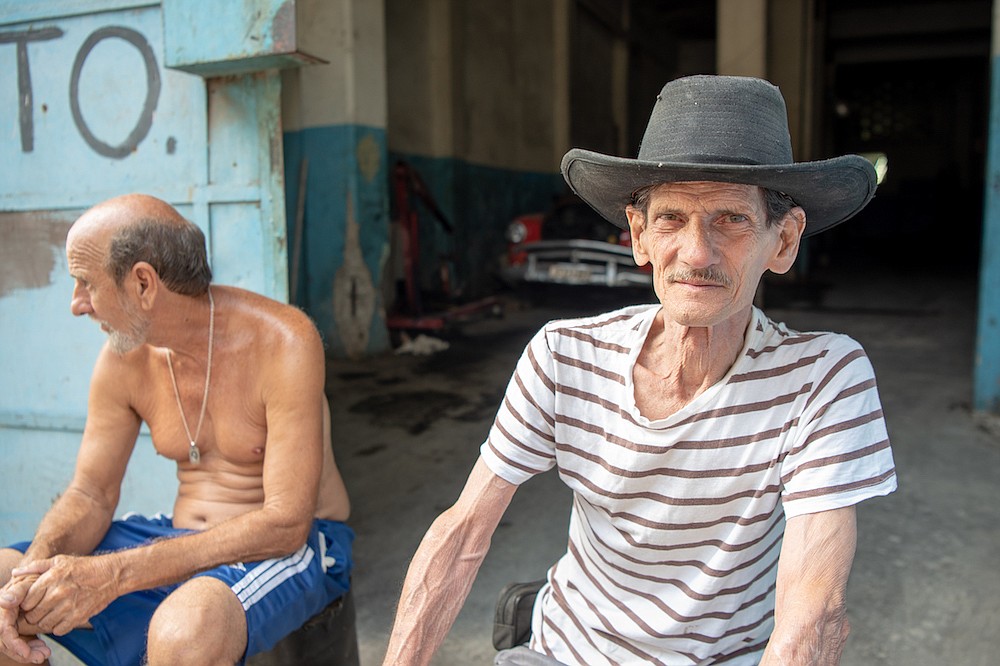- July 17, 2025
-
-
Loading

Loading

Allan Mestel’s first darkroom was his grandmother’s hall closet.
He was 11. Mestel’s dad was a cinematographer, and he would bring film home for his son. Mestel would roll the film off the cassette, take photos, scurry into the closet and turn on the little red light he had to develop the film.
Photography has been his hobby his entire life, but it didn’t become his career until about four years ago when he and his family moved to Florida.
Mestel, 55, spent the bulk of his working life as a television commercial director in Toronto. When his family moved, he said it made sense for him to make photography his career, and since it was already his passion, he said the transition was easy.
After about a year and a half in his Sarasota studio, Mestel decided to move his studio to Whitney Beach Plaza on Longboat Key about three months ago. One draw was the fact that his wife would be working a few doors down at Beach Fitness. Another was that one of his favorite spots to photograph on the west coast of Florida is just down the road – Greer Island, also known as Beer Can Island.
“It’s really unique with all of the dead wood and driftwood,” he said. “There really isn’t any other place I have found that is like it. It’s genuinely unique and photogenic when it’s not being graffitied by the people leaving beer cans.”
Today, Mestel is versatile in his work, which includes portraits, headshots, commercial photography, portfolios, real estate and street photography.
“To make a living you’ve got to be willing to do anything,” he said.
But of those, his favorites are portraits and street photography. He likes working with people.
“I’m trying to get a visual representation of that person’s unique personality,” he said. “It’s something I can’t really tell you how I do it.”
His enjoyment of street photography led him to co-found Streets of Paradise, an arts and outreach initiative that works to raise awareness of life for the homeless in the Sarasota area while also aiding grassroots initiatives to provide access to basic necessities, the project’s website reads.
Being from Canada, Mestel said there are fundamental differences in the U.S.’s social structure that have become apparent to him since moving.
“I do believe that there are certain elements of society that are overlooked, forgotten perhaps,” he said.
Mestel and fellow Streets of Paradise co-founder Greg Cruz will buy some hamburgers and give them to homeless people they see. Mestel will talk with them and ask permission to take their photo for the project – always meeting them at eye level.
If a person is kneeling, he kneels. If someone is lying down, he gets on his stomach. He never uses a long lens. He stays 3 to 5 feet away. This venture has introduced Mestel to people in Sarasota, Bradenton and St. Petersburg.
Mestel said he is struck by the personalities of those he meets on the street.
“For the most part, the majority are sweet, genuine, kind people that are trapped in mental illness or addiction, and I think that’s what gets people on the streets, but that doesn’t mean they should be ignored and overlooked,” he said. “It’s dehumanizing enough to be begging for money.”
His eagerness to photograph and meet others has allowed him to interact with people while traveling. On a recent trip to Cuba, he wandered the streets, away from the tourist spots.
“I want to go where people live and photograph authentic culture, just like I like to shoot authentic portraits,” he said.
He finds that whether he is photographing people in Cuba or in Sarasota, if he approaches people the right way, they are usually open to being photographed.
But no matter where he is, his ability to “create an image through a lens” came from his start as a film editor. He said editing is the best way to learn about film making because you see what does and doesn’t work.
“As an editor you’re exposed to thousands and thousands of hours of stuff that other people have shot and from different angles, with different lenses. You’re selecting those little magic moments and you’re creating a visually tapestry from those images,” he said.
But he said he would never go back to video. He’s all about seeking out those decisive moments.
“They call the still photography capturing the decisive moment, and it really is distilled down to finding that one image, that one moment, that one thing that really is going to translate, transmit to the viewer what it is that you want to say,” he said.